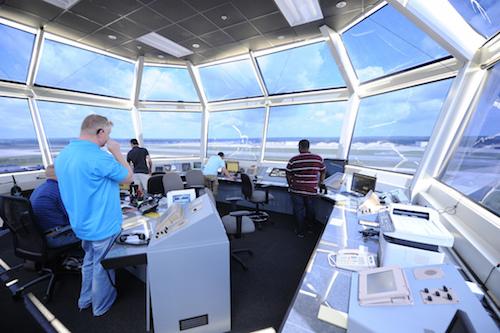Trump Begins Infrastructure Push With Air Traffic Proposal

By Olivia Grady
On June 5, 2017, President Donald Trump gave remarks from the White House outlining his principles to Congress for “modernizing the U.S. air traffic control system.”
The President detailed how outdated America’s air traffic control (ATC) system is and argued that it is difficult to improve with so much federal bureaucracy. He also claimed that flight delays cause a loss of almost $25 billion each year to the economy and affect one billion passengers. Mr. Trump argued that the Obama Administration had previously spent over $7 billion in an attempt to try to fix the current system, but to no effect.
President Trump’s solution is to change the ATC system from government-run by the Federal Aviation Administration (FAA) to run by a new non-governmental entity. The President argued that fees paid by users would fund the entity, instead of the high aviation taxes that users currently pay.
The statement also mentioned Congressman Bill Shuster’s, Chairman of the House Transportation and Infrastructure Committee, 2016 Aviation Innovation, Reform and Reauthorization (AIRR) Act. The Act, which was only introduced into the House, separated ATC operation into a nonprofit entity as well, but the Administration said that the Act could be improved.
The Principles statement emphasizes the need for safety, national security, access, noise reduction and a new entity.
The Administration believes that this proposal would increase safety by making ATC more like international practices and would remove a conflict of interest with the FAA. The U.S. Department of Transportation, however, would continue to regulate aviation safety, and the FAA would change to a performance-based regulatory framework.
To ensure America’s security, the entity would cooperate with the Federal Government, and the Department of Defense would provide direction in emergency circumstances.
The Administration supports open access to the airspace, particularly for rural communities and new entrants, i.e. unmanned aircraft systems. Under this proposal, the FAA would continue to certify new entrants, while the new entity would give them access, subject to a fee schedule.
The proposed new ATC entity would be able to change airspace routes after reviewing public comments about the change and obtaining the FAA’s permission. If the change exceeds the FAA established noise threshold, the FAA would make its determination subject to the National Environmental Policy Act. Otherwise, its determination would be based only on safety.
The Administration describes the new entity as nonprofit and non-governmental with the ability to hire employees, enter into contracts and borrow funds. The entity would be managed by a professional Board of Directors who at first would be nominated by airlines, unions, government, etc. The transition period would take no longer than three years with guidance from the Secretary of Transportation, and the Secretary would also determine if the fees are reasonable when asked. All assets owned by the FAA and used by ATC would be transferred, and the entity wouldn’t be charged for use of the spectrum that is also used by the Departments of Defense and Homeland Security.
Interestingly, the National Air Traffic Controllers Association (NATCA), a union that represents about 20,000 employees, including air traffic controllers, has been very supportive of the air traffic control privatization idea. The President of the Association, Paul Rinaldi, even testified on May 17, 2017, before the U.S. House Committee on Transportation and Infrastructure, and on June 5th, he released a statement saying:
NATCA shares the Administration’s commitments to infrastructure modernization and providing the National Airspace System (NAS) with a stable, predictable funding stream.
The Center for Worker Freedom looks forward to reading the new legislation for this idea.





